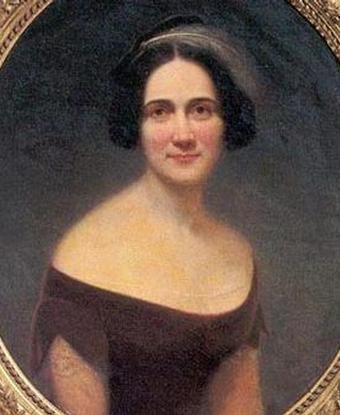Last updated: November 10, 2018
Person
Mary Boykin Chesnut

Mary Chesnut, wife of former US Senator James Chesnut, started to write a diary as South Carolina made the momentous decision to be the first state to secede from the Union. Her diary provides a unique perspective on the political and societal realities of life in the Confederacy as well as first-hand accounts of important events like the bombardment of Fort Sumter and the start of the Civil War.
Mary Boykin Miller was born on March 31, 1823, the daughter of Stephen Decatur Miller, an eminent South Carolina politician, who served as governor and in Congress. In April 1840, she married Chesnut, eight years her senior and another member of South Carolina’s leading class. They went to live with James’ parents at Mulberry, the Chesnut plantation three miles south of Camden. Amid the strong personalities of the Chesnut clan, Mary struggled to adjust and found life more stimulating once they moved to Washington DC when her husband took his seat at the Senate. Chesnut later became the first southerner to resign his seat in the US Senate, following Lincoln's victory in the presidential election.
Chesnut was present at the birth of the Confederacy in Montgomery, Alabama in February 1861, witnessing the inauguration of President Jefferson Davis. She also famously witnessed the outbreak of the Civil War in Charleston and feared for her husband’s safety as he served as General Beauregard’s aide.
Writing of the bombardment of Fort Sumter on April 12, 1861, she wrote:
"Do you know, after all that noise and our tears and prayers, nobody has been hurt. Sound and fury, signifying nothing. A delusion and a snare.... Carolina Institute, where secession was signed, burned down. From East Bay - along Broad St. down to the river - Mr. Petigru's house. So being antisecession does not save. The fire, as the rain, falls on the just and the unjust. Fire appeared simultaneously in several places."
She captured the tense anxiety of the battle and the jubilation that occurred once news of Major Anderson’s surrender of Fort Sumter arrived.
“Carolina Institute, where secession was signed, burned down. From East Bay - along Broad St. down to the river - Mr. Petigru’s house. So being antisecession does not save. The fire, as the rain, falls on the just and the unjust. Fire appeared simultaneously in several places.”
Chesnut’s description of the fire of December 1861, which destroyed an estimated one-quarter of Charleston, foreshadows the later destruction Charleston would face by Union bombardment. Chesnut models the uncertainty and varying fortunes of the war in her personal life as the Confederacy, so often victorious at the outset of the war, ended in defeat and economic ruin.
“Lee’s tears - outsiders’ sneers - Yankees’ jeers. Did we lose by imbecility or because one man cannot fight ten for more than four years? We waited and hoped. They organized and worked like moles, with the riches of all the world at their backs. They have made their private fortunes by their country’s war. We talked of negro recruits. The Yankees used them - 18 million against six. The odds too great.” - Chesnut in 1865 on the course of the war
Like many of the planter elite, the Chesnuts experienced financial troubles after the Civil War, losing their slaves and struggling to keep their plantations with mounting debts. She died in 1886 and was buried next to her husband in Knights Hill Cemetery in Camden, South Carolina.
The diary provides an inside look at the political and social life of the South during the Civil War South and has been called the most important work by a Confederate author by some literary scholars. As Mary had no children, before her death in 1866 she gave her diary to her closest friend, Isabella D. Martin, urging her to have it published. The diary was first published in 1905 as a heavily edited version called A Diary from Dixie. A second, annotated version was published in 1981 as Mary Chesnut's Civil War, which won the Pulitzer Prize for history.
